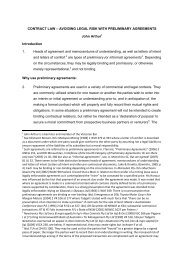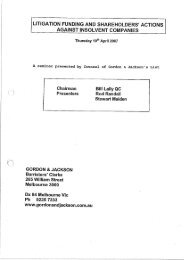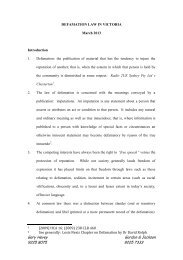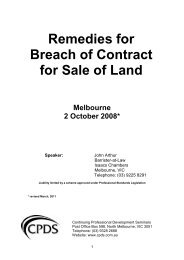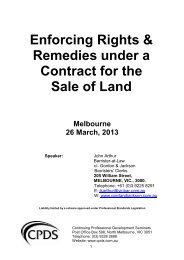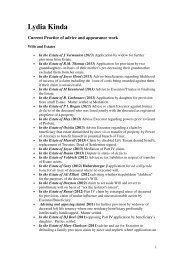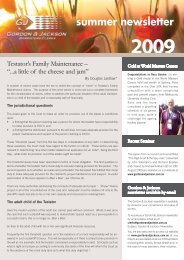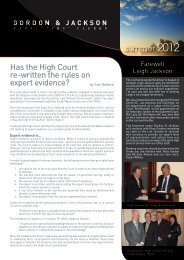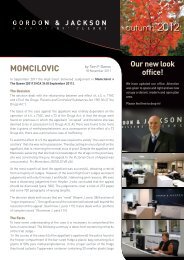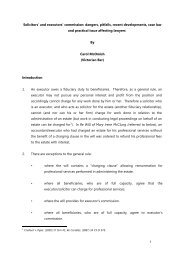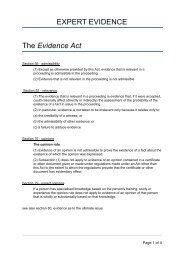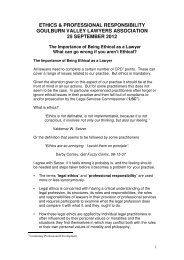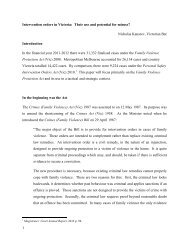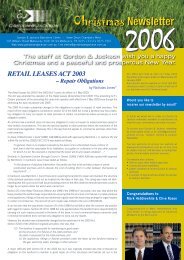here - Gordon & Jackson
here - Gordon & Jackson
here - Gordon & Jackson
Create successful ePaper yourself
Turn your PDF publications into a flip-book with our unique Google optimized e-Paper software.
Introduction<br />
In considering expert evidence it is useful to remember what the rules of evidence are and<br />
why they exist. They are basically procedural rules which provide a framework within which<br />
people can settle their disputes and the law can be enforced. Disputes can be settled in a<br />
variety of ways, including battles, drawing straws, mediation, arbitration and court<br />
determination. I recently listened to a very entertaining after-dinner speech by an American<br />
judge who suggested that given the current state of the US Court system (w<strong>here</strong> patent<br />
litigation is tried before juries) we should revert to a Mad Max beyond Thunderdome system<br />
of arbitrary and rule-free determination of disputes - "bust a deal and face the wheel", "two<br />
men enter one man leaves".<br />
Thankfully the rules of evidence work in a slightly different forum. They are part of a system<br />
whose ultimate aim is to place before an impartial tribunal only the facts that are relevant to<br />
the dispute. The so-called best evidence rule is a reminder of the ideal - the tribunal, as far<br />
as possible, should hear direct evidence of all relevant matters and nothing else, and then<br />
make its decision. So what are the rules and how do they apply in practice?<br />
Page 4 of 31



